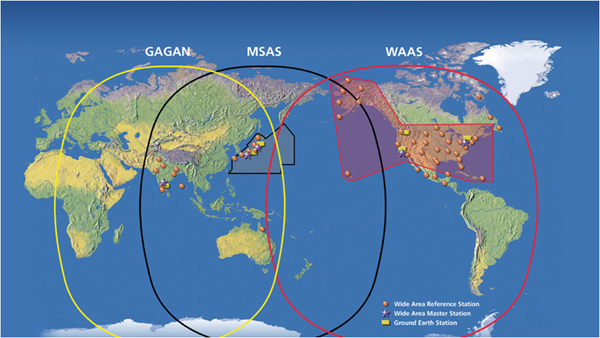|
The new systems – the Standard Terminal
Automation Replacement System in the United States
and AutoTrac III for other markets – give
controllers powerful new tools to boost the capacity
of air routes, minimize travel delays and ensure
safety.
AutoTrac III provides air traffic controllers
with the latest surveillance and flight data necessary
to safely guide air traffic at some of the world’s
busiest airport hubs. It even allows controllers
to predict conflicts 99 minutes into the future
during the cruise phase of flight using information
transmitted by the aircraft themselves.
“They can actually see into the future and
solve problems before they happen,” said
Bob Meyer, director of air traffic systems.
Dallas-Fort Worth is the first of the United
States’ 11 high-volume terminal radar approach
control facilities to install STARS. These approach
facilities, known as TRACONs, guide planes as
they move between high-altitude jet routes and
the airspace around airports.
 STARS
helps to ensure the safe separation and efficient
management of aircraft around some of the largest
airports in the United States. Image courtesy
of the FAA. STARS
helps to ensure the safe separation and efficient
management of aircraft around some of the largest
airports in the United States. Image courtesy
of the FAA.
In Dubai, meanwhile, AutoTrac III is now in continuous
operation. It helps guide planes moving in and
out of Dubai International, Dubai World Central,
Al Maktoum International, Sharjah International
and Minhad Air Force Base, as well as air traffic
control service to Ras Al Khaimah International.
The systems are fundamental to next-generation
air traffic control, which will allow more direct
routes across the globe and more fuel-efficent
approaches to airports.
That makes air travel safer, quieter, more reliable
and better for the environment, Meyer said.
“If we can actually get planes to not hold
as long, or give them much more manageable and
direct routings, they’re going to burn less
fuel and they’re going to emit fewer emissions,”
Meyer said. “All that adds up to greener
airspace.”
Raytheon has a long history of air traffic management
dating back to the magnetrons, or radio transmitters,
that it produced for early radar systems during
World War II.
Its systems manage 60 percent of the world’s
airspace, and the company is now the leading provider
of systems designed to improve the accuracy of
satellite-based navigation.
In July the company will mark the 10th year of
its Wide Area Augmentation System, which allows
safe landings in low visibility without the need
for airports to install costly, radio-based guidance
systems.
Raytheon’s Wide Area Augmentation System,
WAAS, saves jet fuel and reduces noise and carbon
emissions by helping aircraft achieve the ideal
glide path as they approach landing. Image courtesy
of the FAA.
“Pilots are now enjoying all-weather access
to thousands of airports,” said Joseph Paone,
director of Air Traffic Systems for Raytheon’s
Integrated Defense Systems business.
Raytheon has incorporated the same technology
into Japan’s Multi-Functional Satellite Augmentation
System on India’s GPS-Aided Geo-Augmented
Navigation system, or GAGAN. The GAGAN system
is just about getting into operation.
|